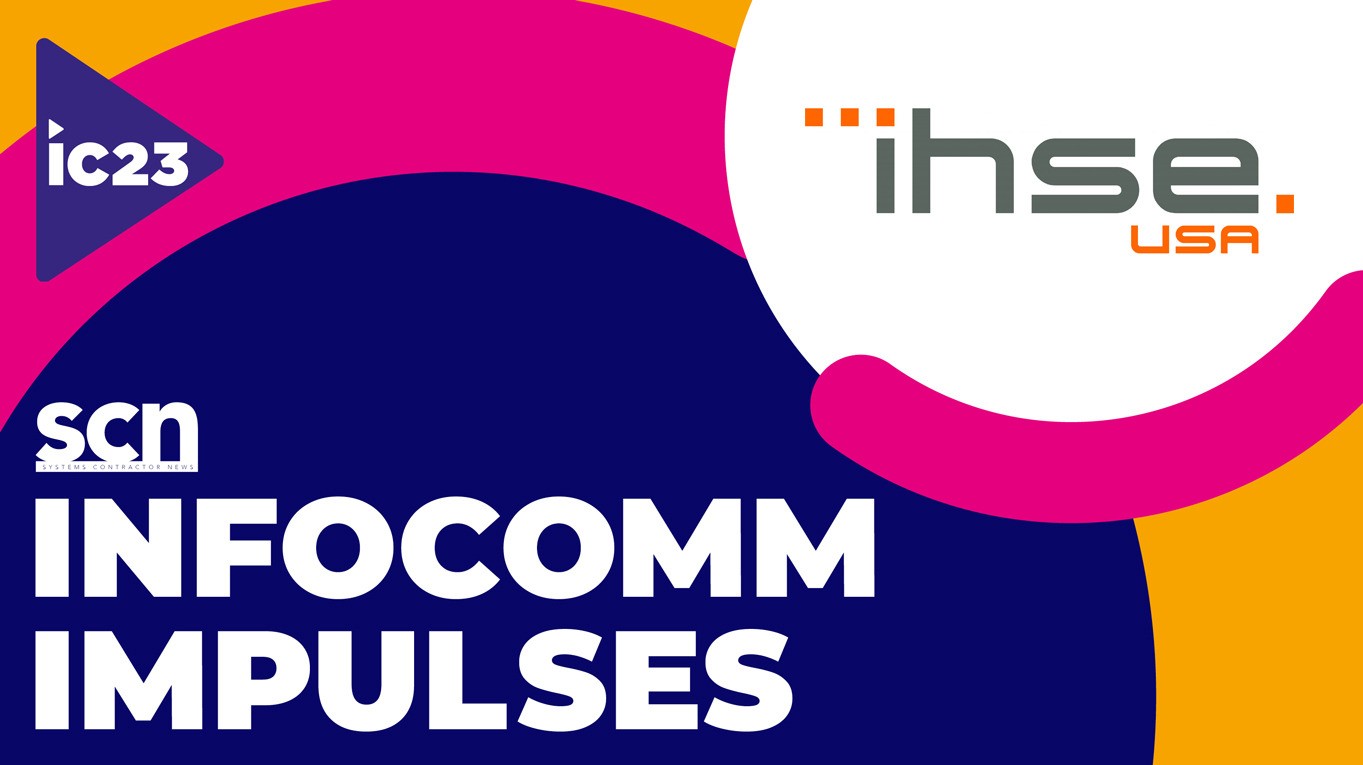
InfoComm 2023 returns to Orlando, FL this June 10-16. With the event just over a month away, we’ve turned to InfoComm 2023 exhibitors to learn what trends they expect to see at the show—plus an exclusive special sneak preview of what they’ll show in their booths—in our InfoComm Impulses 2023 series.
[Follow the ROAD TO INFOCOMM 2023 at AV Network]
Today, meet Dan Holland, marketing manager for IHSE USA.

How does InfoComm inspire you?
Dan Holland: IHSE USA has been attending InfoComm since 2009 and continues to see the event as a premiere asset for our strategic marketing growth. Over the years, we have seen a major shift in the Pro AV industry to file-based video distribution strategies in regard to content storage, control room management, and the sharing of content over remote access workstations. IHSE’s KVM and display management systems are a perfect fit for this type of data management, and we are always amazed at the new ways customers utilize our equipment to simply their workflow needs.

* InfoComm Impulses 2023: MAXHUB Talks Collaboration and New Displays
* InfoComm Impulses 2023: AtlasIED
* InfoComm Impulses 2023: PTZOptics Talks AI and NDI and Dante-Enabled Cameras
* InfoComm Impulses 2023: LG Business Solutions on Transparent and dvLED Displays
* InfoComm 2023 Impulses: Snap One Talks Remote Management
* InfoComm 2023 Impulses: FOR-A on XR, Virtual Production, and Immersive Experiences
What technology or industry trend do you expect to be the talk of InfoComm 2023?
DH: As computers and monitors continue to advance image quality, we expect to see an increase in demand for video distribution and switching systems to support high dynamic range (HDR) and high frame rates (HFR). These will be big influencers for the production, media and entertainment and live-events venues. Conversely, we expect to see demand for better compression and IP-based KVM to support higher bandwidth and resolutions. UHD has more options available now and many display manufacturers are introducing full 4:4:4 60 frames now with 120 frames making headway in early adopters. With the higher bandwidth, professional AV users will be looking at fiber optic solutions.
What is your company’s main focus at the show this year?
DH: At InfoComm 2023 we will be introducing new solutions for our Media4Kconnect KVM-over-IP extenders for DisplayPort 1.2. This new line of extenders supports resolutions up to 4K with perfect 4:4:4 color space and can be configured as a point-to-point set or, when combined with a 10G network switch can be configured for many-to-many connections to source hundreds of end points over the same control management systems. Additionally, IHSE will promote our new IHSE G-Flex KVM matrix with integrated 10G interface lines to create shared links between multiple KVM switch frames. Frame sizes range from 16 ports to 160 ports supporting up to eight channels simultaneously distributed across a single duplex fiber connection for up to a 10Km separation. In general terms, we see companies shifting more to network-based editing and production equipment which, in turn, has increased the demand for quality-based KVM (keyboard, video, mouse) matrix systems. This year IHSE USA will be focusing on live product presentations of matrix switch and extender solutions that support long distance distribution and computer access for systems supporting high-definition video such as multi-head workstations, mouse sharing, remote work access and Multiview processors.
Traditional KVM or KVM-over-IP—how can you help customers choose the right solution for their installation?
DH: Signal management across the network remains a complex and sometimes difficult process when trying to create a solid connection with the latest high-performance processing and video resolution requirements. Although larger companies are moving toward a full IP solution, many smaller companies are constrained with CAPEX and limited budgets for hiring internal IP professionals to maintain and structure a full IP-based facility. KVM-over-IP allows low latency solutions for remote access, but still requires a professional on-staff network manager for service and troubleshooting in environments where 24/7 operations is critical.
[Deep Dive: Classic KVM vs. KVM-over-IP]
An alternative to KVM-over-IP is the directly connected KVM switch. This is very common in broadcast and post-production deployments that demand low latency, fast switching, and high-quality connections. It is a method of dynamically connecting workstations to computer sources through a matrix in much the same way that a traditional video router operates in a non-aggregated distribution method. A direct connect KVM matrix facilitates centralized content storage in a non-blocking method while allowing local access at the workstation. The user can access and operate transparently any source connected and assigned to that workstation. Maintenance and troubleshooting are not as complex and require minimum staff to keep operations going.
!["[T]he First and Fifth Amendments Require ICE to Provide Information About the Whereabouts of a Detained Person"](https://images.inkl.com/s3/publisher/cover/212/reason-cover.png?w=600)






